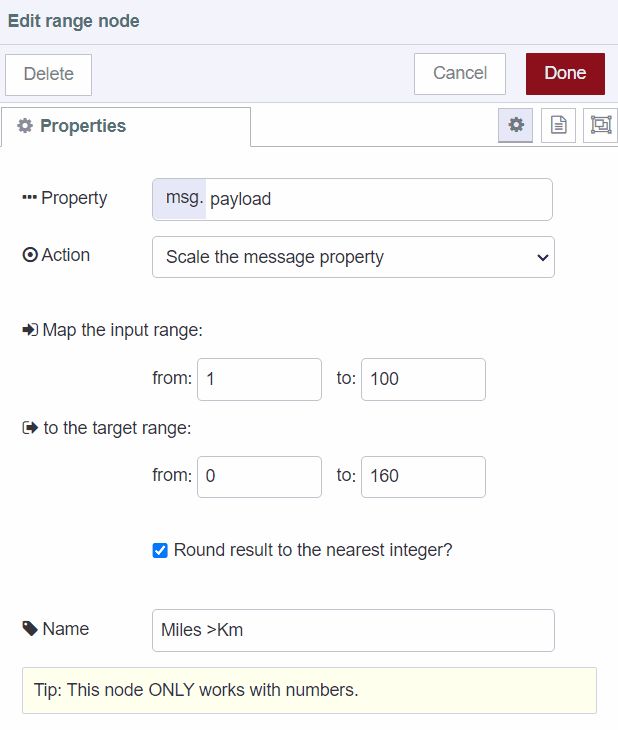Range
What's the Range node in Node-RED used for?
The "Range" node in Node-RED allows you to map a numeric value from one range to another. For example, if you wanted to map miles to kilometers, you can specific the input range at 1 to 100 and the target range as 1 to 160.
Besides unit conversion, the range node can be used for:
Data Scaling: Use the "Range" node to scale or normalize data. For example, if you have sensor readings that range from 0 to 1023 but you want to convert them to a 0-100 percentage scale, you can use the "Range" node for this transformation.
Data Compression: Reduce the range of data values while preserving the relationships between values. This can be useful for displaying data on a smaller scale without losing important variations.
Analog-to-Digital Conversion: When interfacing with analog sensors, you can map the analog voltage range to a digital value range for processing.
Data Smoothing: Smooth out data fluctuations by mapping values within a range to a single value.
Examples for the Range node
An example of a change node that converts from miles to kilometers.

Node Documentation
Maps a numeric value to a different range.
Inputs
Outputs
Details
This node will linearly scale the received value. By default, the result is not constrained to the range defined in the node.
Scale and limit to target range means that the result will never be outside the range specified within the target range.
Scale and wrap within the target range means that the result will be wrapped within the target range.
Scale, but drop if outside input range means that the result will be scaled, but any inputs outside of the inout range will be dropped.
For example an input 0 - 10 mapped to 0 - 100.
| mode | input | output |
|---|---|---|